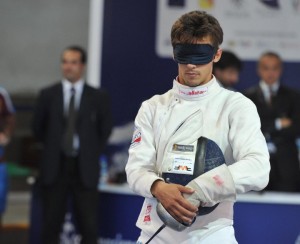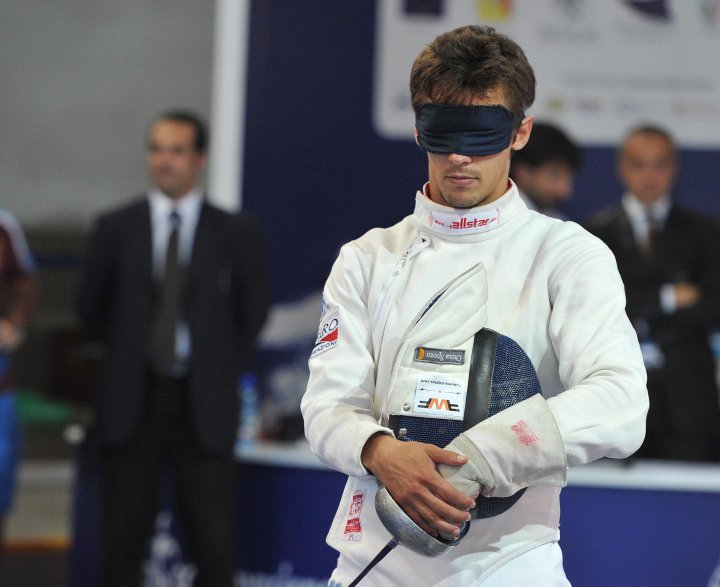
Friday, June 25th, was an historic day at the Concetto Lo Bello in Syracuse. Andrea Baldini (pictured, left) donned a blindfold and fenced epee with a practicioner of Italy’s newest niche sport-Scherma per non vedenti. A number of important guests were on hand to witness the bout, including FIS president, Girogio Scarso.
The concept originated with Denise Cassarino. She, along with Maestro Giancarlo Puglisi (Conad Fencing Modica,) believe that opening fencing to blind participants is a significant step made to promote awareness of the difficulties faced by the blind. Maetro Puglisi feels strongly that it is important to open new avenues of physical activity to the blind.
The official presentation in Syracuse was the culmination of months of training and preparation to unveil this exciting new development in the world of fencing.
Video of the project is available. The video below has been pulled from Youtube:
Fencing for the Blind: Video
For more on this, refer back to where we got the story:
A Siracusa “scherma per non vedenti” prima esperienza in Italia: Andrea Baldini tirerà bendato con un ragazzo non vedente
A Siracusa “scherma per non vedenti” prima esperienza in Italia: Andrea Baldini tirerà bendato con un ragazzo non vedente




11 Comments
Comments are closed.